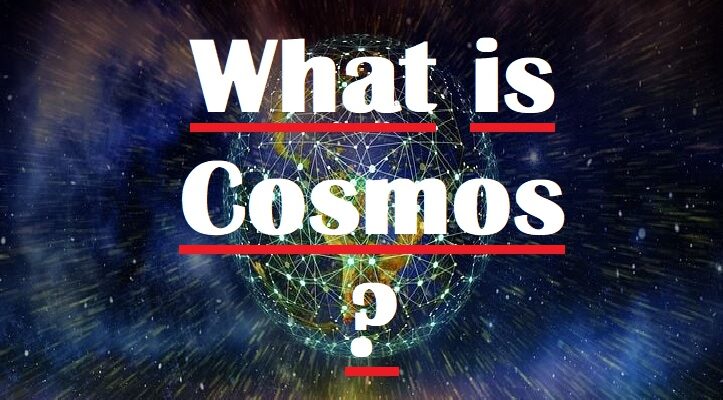What is Cosmos?
Cosmos is an open-source blockchain platform that aims to create a network of interconnected blockchains that can communicate and exchange value with each other. Cosmos was founded in 2016 by Jae Kwon and is based on the Tendermint consensus algorithm.
At its core, Cosmos is designed to solve the problem of blockchain interoperability. Currently, many different blockchains operate independently of each other, making it difficult for users to transfer value and data between them. Cosmos seeks to solve this problem by creating a network of interconnected blockchains, where each blockchain can communicate and exchange value with each other.
In this article, we will explore Cosmos in detail, including its architecture, consensus mechanism, governance model, and applications.
Architecture?
The Cosmos architecture is built around a modular framework that consists of three main components:
1. Tendermint Core:-
Tendermint Core is the consensus engine that powers the Cosmos network. It is a Byzantine fault-tolerant consensus algorithm that allows multiple validators to reach consensus on the state of the network. Tendermint Core uses a Proof-of-Stake (PoS) consensus mechanism, where validators stake their tokens to participate in the consensus process and earn rewards for validating blocks.
2. Cosmos SDK:-
The Cosmos SDK is a software development kit that allows developers to build custom blockchains on top of the Cosmos network. The SDK provides a set of tools and modules that developers can use to create their blockchain applications, including modules for account management, asset management, governance, and more.
3. Inter-Blockchain Communication Protocol (IBC) :-
The Inter-Blockchain Communication Protocol (IBC) is the protocol that allows different blockchains to communicate and exchange value with each other on the Cosmos network. IBC uses a packet-based protocol to transfer data and value between blockchains, and it allows for the creation of cross-chain applications.
Consensus Mechanism?
The Cosmos network uses a Proof-of-Stake (PoS) consensus mechanism to validate transactions and secure the network. In the Cosmos PoS system, validators stake their tokens to participate in the consensus process and earn rewards for validating blocks. The more tokens a validator stakes, the greater their chances of being selected to validate a block.
To become a validator on the Cosmos network, users must first purchase and hold a certain amount of Cosmos tokens (ATOMs). Once they have acquired enough tokens, they can stake them and participate in the consensus process. Validators are selected to propose and validate blocks based on their stake, and they can earn rewards for their participation.
Governance Model?
The Cosmos network has a decentralized governance model that allows token holders to participate in the decision-making process. Governance decisions are made through a proposal and voting system, where any token holder can propose a change to the network or vote on a proposal.
To submit a proposal, users must first stake a certain amount of Cosmos tokens (ATOMs) as collateral. If the proposal is accepted, the tokens are returned to the user, and the proposal is put up for a vote. If the proposal receives enough votes in favor, it is implemented on the network.
Applications?
The Cosmos network has a wide range of applications, from decentralized finance (DeFi) to gaming and identity verification. Some of the most popular applications built on the Cosmos network include:
- Crypto.com:-
Crypto.com is a leading cryptocurrency exchange that has built its own blockchain, called the Crypto.com Chain, on the Cosmos network. The Crypto.com Chain uses the Cosmos SDK to create a fast, scalable, and secure blockchain that can handle high transaction volumes.
The Crypto.com Chain is designed to be a high-performance blockchain that can support a range of DeFi applications, including decentralized exchanges (DEXs), lending and borrowing platforms, and more. The chain uses the Tendermint consensus algorithm to validate transactions and secure the network.
- Binance Smart Chain:-
Binance Smart Chain is a blockchain platform built by Binance, one of the largest cryptocurrency exchanges in the world. The Binance Smart Chain uses the Cosmos SDK to provide a high-performance, low-cost alternative to the Ethereum network.
The Binance Smart Chain is designed to support a range of DeFi applications, including DEXs, yield farming platforms, and more. The chain uses a Proof-of-Staked Authority (PoSA) consensus mechanism, where validators are selected based on their stake and their reputation within the network.
- Kava:-
Kava is a DeFi platform built on the Cosmos network that allows users to borrow and lend a range of cryptocurrencies. The Kava platform uses the Cosmos SDK to create a fast, scalable, and secure blockchain that can handle high transaction volumes.
The Kava platform is designed to be a user-friendly platform for DeFi users, with a simple user interface and a range of features for managing collateral and borrowing funds. The platform uses a PoSA consensus mechanism, where validators are selected based on their stake and their reputation within the network.
- Irisnet:-
Irisnet is a blockchain platform built on the Cosmos network that focuses on interoperability and scalability. The Irisnet platform uses the Cosmos SDK to create a fast, secure, and scalable blockchain that can handle high transaction volumes.
The Irisnet platform is designed to support a range of applications, including supply chain management, identity verification, and more. The platform uses a PoS consensus mechanism, where validators are selected based on their stake and their reputation within the network.
- Persistence:-
Persistence is a blockchain platform built on the Cosmos network that focuses on asset tokenization and DeFi. The Persistence platform uses the Cosmos SDK to create a fast, secure, and scalable blockchain that can handle high transaction volumes.
In conclusion, the Cosmos network has a wide range of applications, from DeFi to gaming and identity verification. The modular architecture of the Cosmos network allows developers to create custom blockchains and applications on top of the network, and the interoperability provided by the IBC protocol allows these blockchains to communicate and exchange value with each other. With its scalable and secure blockchain platform, Cosmos has the potential to revolutionize the way we interact with blockchain technology.
THANK YOU



